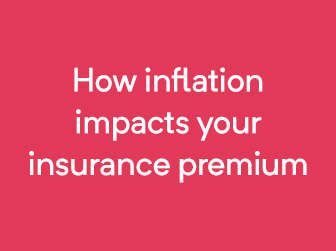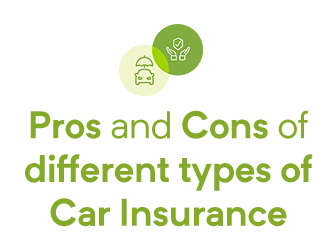When choosing a new car insurance, one of the most important factors to consider is the insurance excess cost. Low insurance premiums could sometimes mean a high insurance excess cost – and if you don’t make an informed decision at the start of your contract, you might be in for a nasty surprise if you’re ever in a car accident.
Read on to make sense of insurance excess and how it could impact you:
A car insurance excess is the first amount payable by you the client if you’re in an accident. It is the uninsured portion of your loss which is payable by you when you make a claim on a loss. Normally the excess is paid to the garage fixing the automobile once the repairs are completed.
This excess is payable by the insured regardless of who is responsible (to blame) for the accident. This serves as a shield for the insurance company against minor claims and fraudulent claims. It also works to keep the premiums down.
As suggested by the name, compulsory insurance excess is applied to your policy by the insurance provider. Normally, compulsory insurance varies across different age groups and type of vehicle.
The insurance providers usually set higher compulsory excess amounts for young and inexperienced drivers than for older drivers with more experience on the road. The reason behind this is that younger drivers are categorised as higher-risk individuals and thus attract an additional compulsory excess. The same logic is applied to owners of high value cars like luxury cars and high-performance cars. These super expensive vehicles attract a very significant amount of compulsory excess.
When it comes to voluntary excess, things are quite different. Here you set your own amount (above the compulsory excess) that you are willing to pay. This is an effective way through which many people have been able to lower their overall insurance costs. By increasing your voluntary excess, you attract lower premiums from the insurance provider.
This is how it works. Increasing your excess will shift some risk from the insurance provider back to you. It saves the insurance company from paying out numerous minor claims. However, inasmuch as you want to save more by paying smaller premiums, remember that if anything does happen resulting in a loss, you will have to fork out a larger chunk of money (both the compulsory and voluntary excesses).
The excess for which you are liable is usually listed on your insurance certificate. Different policies have different types of excesses which are applicable in different situations. To find out about the excess applicable to you, kindly refer to your insurance certificate. Below are some of the main excesses applicable to comprehensive (car) insurance.
1. Standard Excess
It is an amount agreed upon by both the insured and insurer to be contributed towards making of claims. It can be applicable on its own or with another excess.
2. Age
This excess is applicable in addition to the standard excess for drivers under 25 years when they make a claim. Different types of excesses can be applied by insurers for drivers under 25.
a. Inexperienced Driver Excess
This is an excess applicable to drivers over 25 years of age but with less than 2 years of driving experience (from the time of licence issuance).
b. Unlisted Driver Excess
This excess applies to drivers under 25 years who are not listed in the policy.
3. Special Excess
Sometimes it is possible to have arrangements for special circumstances for which an additional excess is payable above the standard excess upon the actualisation of the circumstances agreed upon.
To better understand how excess works let us use a hypothetical example. Let's say your insurance policy has an excess of R25,000 and you happen to be in an accident that leads you to make a claim of R100,000. Your insurer will retain the first R25,000 and give you the remaining balance of R75,000.
Take another scenario in which you are involved in an accident with damages worth R6,000. If you have an insurance excess of R500, your insurer will pay R5500 with you having paid the excess to the garage fixing your car
When you can reclaim your excess
Going back to our very first question, is it possible to get a refund of your excess? The simple answer is yes! However certain conditions have to be met. There are two ways to go about this:
1. Having the excess waived
2. Insuring against paying your excess
Having the excess waived
Most insurers can and will waive the excess upon application by their client. The client will have to prove that they were not at fault and provide the insurance company with the name and address of the party at fault.
However, for damage incurred on a parked car as a result of a flood or fire, one is still liable to pay a basic excess. Some insurers will allow for addition of extra coverage to the policy so that one won't have to pay any excess for these kind of claims.
It is possible to take an excess insurance policy covering the cost in the event that you must make a claim. For this to be beneficial, it is worth considering the cost of the insurance policy versus the cost of increasing the voluntary excess.
Let us consider an example. Say you take an excess insurance policy worth R600 to cover an excess amount of R12,000. You should consider if the increase in the excess amount saved is greater than the R600 cost of the excess insurance policy.
Many insurance providers will have departments for legal recoveries that do a lot to recover your excess for free. The process of excess recovery should be initiated immediately from the party at fault and you will be reimbursed your money upon the successful conclusion of the process.
2019 Jeep Wrangler – the best Jeep yet?
Everything you need to know about your brakes


